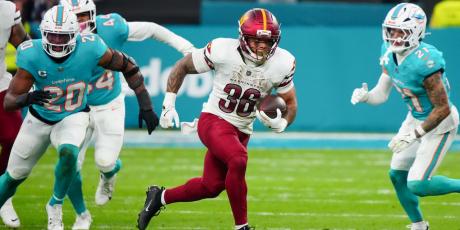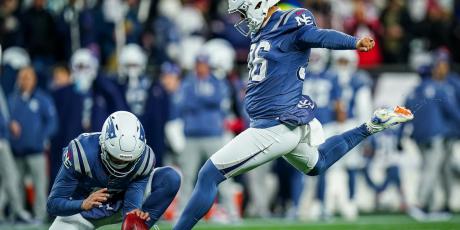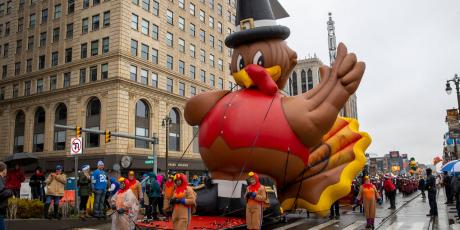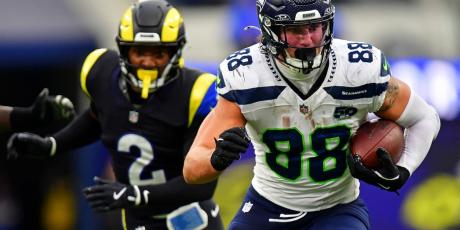When to Draft a Wide Receiver in Your Fantasy League

While the world is in the midst of potentially massive, permanent shifts, there’s one thing we know we can rely on year after year: running backs dominating the top of fantasy football drafts. Even if your league is filled with die-hard 4for4 subscribers and ZeroRB zealots, inevitably, the first handful of picks will include names like Christian McCaffrey, Saquon Barkley, Ezekiel Elliott, and Alvin Kamara. Given the lack of workhorse running backs, can we truly blame them? Of course not. But that doesn’t mean we have to follow their lead.
More Positional Strategy Guides: QB | TE | RB
As was the case last year, this is an in-depth draft strategy piece covering wide receivers (not running backs). The setup of this article is simple: operating within the framework of a traditional 12-team, snake draft, I’ll pull ADP data from 4for4’s brilliant Multi-site ADP tool to examine strategic approaches to drafting wide receivers in fantasy in 2020. As is tradition, the article will be broken down into three different parts based on where you might hypothetically be picking (early, middle, or late in the first round). Included at the bottom is a handy cheat sheet with round-by-round wide receivers to target that will be updated throughout the summer for you to reference as drafts approach. So let’s get to it.
Early-Round Pick WR Strategy
Round 1
In the off chance you land in the first four picks of Round 1 and want to zig while others zag (perhaps you only value two of the aforementioned workhorses as worthy of this draft capital), there’s really only one wideout to consider this early and his name is Michael Thomas. He’s our top-ranked wide receiver and for good reason. Thomas has led the league in receptions in back-to-back years, while posting 100-plus in three straight, with target shares of 31.8%, 28.3%, and 27.8% in that same span. The Saints lost Ted Ginn Jr. and added Emmanuel Sanders, so there’s no real threat to siphon a massive amount of volume from Thomas, making him among the safest picks in fantasy at the position.
Rounds 2 and 3
Whether or not you follow the pack and draft a running back at the top of Round 1, there will be a true wealth of options that you can and should choose from in the next two rounds. Take, for instance, Mike Evans. As Eric Moody noted in a fantastic player debate earlier this offseason, despite what some narratives might try to tell you, Tom Brady (Evans’ new quarterback) threw the ball deep often and well last season. Even though he was slinging the rock to a questionable group, Brady tied for the 13th-most pass attempts 20-plus yards downfield, completing 42% of those for 728 yards and a quarterback rating of 102.1. Now imagine if instead of Phillip Dorsett, Jakobi Meyers, and N’Keal Harry, those targets were intended for the 6-foot-5, sure-handed Evans. Evans notched the second-most receptions of 40-plus yards in the league last season with seven. It’s not crazy for that number to increase with an improvement at quarterback.
A little later in drafts loom is the enticing duo of Kenny Golladay and Amari Cooper. Each makes for a great late-second or early-third-round pick, but with a little different flavor depending on your strategy and style. Golladay is the higher upside, but also riskier pick. His 11 touchdowns last season are indicative of his talent, explosiveness, and the team’s reliance on his playmaking ability. But they also hint at potentially significant touchdown regression, per TJ Hernandez. Still, Golladay has seen north of 20% of the team’s targets in each of the last two seasons, and there remains a lack of depth around him, creating the potential for that target share to increase (especially if Matthew Stafford plays the full season).
Conversely, Cooper’s fantasy ceiling is lower, but he offers safe, top-tier fantasy wide receiver production. While some might peg the arrival of CeeDee Lamb in the draft as a knock against Cooper, the Cowboys watched 166 targets walk out the door this offseason with Randall Cobb and Jason Witten. Over the last two years, on loaded Dallas offenses, Cooper averages 7.8 targets, 5.3 receptions, 76.7 yards, and .6 touchdowns per game (for comparison, Golladay’s averages are 7.6, 4.4, 72.3, and .52 in that same span). Drafting Cooper isn’t likely to elicit many “oohs” and “aahs” from the draft room, but he will bring reliable production to your wide receiver room.
Exiting this portion of the draft with an elite running back and two of these wideouts, or three of these wideouts, will have your squad well-positioned for fantasy success in 2020.
Rounds 4 and 5
Continue reading for mid- and late-round WR strategies + a list of 45+ WR's and where Alex Gelhar would draft them!

- All Premium Content
- The most Accurate Rankings Since 2010
- Expert Draft Picks w/DraftHero
- Highest Scoring Lineup + Top Available Players w/LeagueSync
- ...and much much more






















